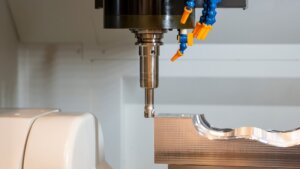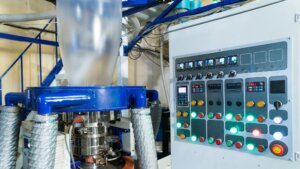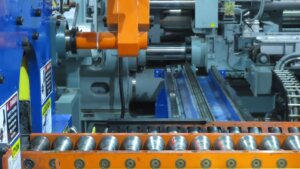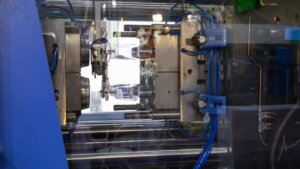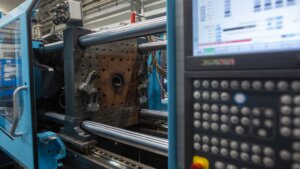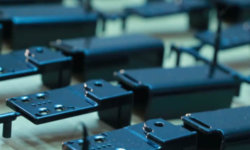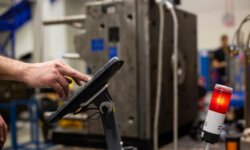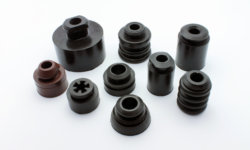Injection molding and extrusion stand as pivotal manufacturing processes in the plastic industry, each with unique characteristics and applications. In this detailed exploration, we aim to dissect these methods, highlighting their distinct nature and operational principles.
These processes, fundamental in shaping countless products around us, from intricate medical devices to robust automotive parts, represent the cornerstone of modern manufacturing techniques.
What is the difference between Injection Molding and Extrusion?
Understanding the intricacies of injection molding and the plastic extrusion process is key to discerning their optimal applications.
The injection molding process, known for its precision and ability to create complex three-dimensional shapes, contrasts with the continuous, profile-centric nature of the plastic extrusion method. This comparison delves into the core of these methodologies, revealing their respective strengths and limitations.
What is Extrusion?
Extrusion molding, a process revered for its simplicity and efficiency, involves the continuous deformation of plastic material. By forcing molten plastic through a specific die shape, it creates uniform profiles of plastic parts, such as tubes, sheets, and pipes. The extrusion process is a dance of temperature control, material consistency, and die design, each element playing a pivotal role in achieving the desired product characteristics.
- Material Selection: Choosing the right plastic resin tailored for the intended product.
- Heating and Melting: The resin is heated and melted, transforming into a pliable state.
- Forcing through Die: The molten plastic is then pushed through a die, taking its shape.
- Cooling and Solidification: The extruded plastic is cooled, solidifying into its final form.
- Cutting and Finishing: The continuous profile is cut to length and finished as required.
What is Injection Molding?
Injection molding, a method celebrated for its versatility and precision, entails injecting molten plastic into a mold cavity. This technique is particularly effective in creating complex, three-dimensional shapes with intricate details and a high-quality surface finish. The injection molding process embodies a fusion of engineering precision, material science, and design flexibility.
- Mold Design: Crafting a detailed mold structure that reflects the desired shape.
- Material Preparation: Selecting and preparing the plastic material for injection.
- Injection: The molten plastic is injected into the mold under high pressure.
- Cooling: The injected material cools and solidifies within the mold.
- Ejection: The solidified part is ejected from the mold, ready for further processing or use.
What Are the Advantages and Disadvantages of Extrusion?
In this section we uncover the intricate balance of benefits and drawbacks when compared to its counterpart, injection molding. This exploration is crucial for professionals in the field, from designers to manufacturers, seeking to optimize their production methods and output quality.
Advantages of Extrusion when compared to injection molding
The process of extrusion, a cornerstone in plastic processing, presents several compelling advantages, especially when juxtaposed with injection molding. These benefits not only speak to the efficiency of the process but also to its versatility and practicality in a wide range of applications.
- Cost-Effectiveness: One of the significant advantages of extrusion over the injection molding process is its cost-effectiveness. Extrusion machines generally have lower tooling costs compared to the complex mold structures needed in injection molding. This financial benefit makes extrusion a go-to choice for projects where budget constraints are a key consideration.
- Efficient Production of Linear Shapes: Extrusion excels in creating continuous linear profiles, such as tubes and pipes. This capability is particularly beneficial for producing long sections of a product in a single, unbroken sequence, a feat challenging to achieve with injection molding.
- Material Versatility: The extrusion process is compatible with a wide range of plastic materials, including thermoplastics like polyethylene and polypropylene, enhancing its applicability across various industries. This flexibility allows manufacturers to choose the most suitable plastic resin for each specific project.
- Speed and Efficiency in Production: Compared to injection molding, extrusion can be faster, especially for manufacturing long, continuous shapes. The continuous nature of the extrusion process lends itself to higher production rates, making it ideal for large-scale manufacturing.
- Simplicity in Design and Operation: Extrusion molds, known as dies, are typically simpler to design and manufacture than the complex molds used in injection molding. This simplicity translates into a shorter setup time and easier operability, beneficial for manufacturers looking to streamline their production processes.
Disadvantages of Extrusion when compared to injection molding
While extrusion offers numerous advantages, it is not without its limitations, especially when compared with the injection molding process. Understanding these drawbacks is essential for manufacturers to make informed decisions about which process to employ for their specific needs.
- Limited Product Complexity: One of the main disadvantages of extrusion is its limitation in creating complex, three-dimensional shapes. Unlike injection molding, which can produce intricate and detailed parts, extrusion is primarily suited for products with uniform cross-sections.
- Surface Finish and Texture Limitations: Although extrusion can provide a smooth surface finish, it lacks the variety of surface textures and intricate details achievable through injection molding. This limitation might affect the aesthetic and functional aspects of the final product, especially in applications where a high level of detail is crucial.
- Less Precision in Dimensional Tolerances: In comparison to injection molding, extrusion tends to offer less precision in terms of dimensional tolerances. This aspect might limit its use in applications where exact measurements and tight tolerances are necessary.
- Restrictions in Part Length: While extrusion is excellent for creating long, continuous profiles, there are practical limitations to the length of the extruded parts, governed by logistics and handling considerations. This factor may restrict its application in scenarios where exceptionally long parts are required.
- Energy Consumption: Despite being efficient in many ways, extrusion processes can be energy-intensive, particularly when dealing with high-temperature plastics. This factor is important to consider from both an operational cost and environmental sustainability perspective.
What Are the Advantages and Disadvantages of Injection Molding?
Now, let’s dissect the advantages and disadvantages of injection molding, especially in its comparison with extrusion, to provide a comprehensive understanding of its role in modern manufacturing.
Advantages of Injection Molding
The injection molding process is revered for its precision and versatility. The benefits it brings to the table, particularly when compared to extrusion, are substantial and varied, catering to a range of manufacturing demands.
- Precision in Complex Shapes: Injection molding excels in creating intricate, three-dimensional shapes, surpassing the capabilities of extrusion in this regard. This precision allows for the production of complex parts with detailed geometries, such as gears, automotive components, and medical devices.
- High-Quality Surface Finish: The injection molding process is capable of producing parts with excellent surface finishes. This quality is crucial in applications where aesthetics are as important as functionality, offering a range of surface texture options unavailable in extrusion.
- Material Versatility: Injection molding machines can handle a diverse array of plastic materials, including thermoplastics, thermosets, and elastomers, providing manufacturers with the flexibility to choose the best material for each specific application.
- Efficiency in High-Volume Production: When it comes to mass production, injection molding stands out for its efficiency. The process is highly automated, allowing for the rapid production of large quantities of parts with consistent quality.
- Tighter Tolerances and Greater Consistency: The precision of injection molding also extends to its ability to maintain tight tolerances. This consistency is vital in industries where minute discrepancies can significantly impact the functionality of the part, such as in aerospace or medical applications.
Disadvantages of Injection Molding
Despite its numerous advantages, the injection molding process is not without its limitations. These drawbacks, particularly when compared to extrusion, highlight areas where injection molding may not be the ideal choice.
- Higher Tooling Costs and Longer Setup Times: The complexity of molds in injection molding often results in higher tooling costs and longer setup times compared to extrusion dies. This aspect can make injection molding less cost-effective for short runs or prototypes.
- Limitations in Part Size: Injection molding is typically constrained by the size of the mold and the clamping force of the machine. This limitation can be a significant drawback for projects requiring very large parts, an area where extrusion may offer more flexibility.
- Material Waste: The injection molding process can generate more material waste, such as sprues and runners, which may not always be recyclable. This factor is a critical consideration in today’s environmentally conscious manufacturing landscape.
- Longer Cycle Times for Complex Parts: While injection molding is efficient for high-volume production, the cycle times can be longer, especially for complex parts requiring intricate mold designs and cooling times. In contrast, extrusion can be faster for producing simpler, continuous profiles.
- Energy Consumption: The injection molding process can be energy-intensive, particularly in the heating and cooling cycles. This aspect is increasingly important as industries strive for more sustainable manufacturing practices.
How Do Injection Molding and Extrusion Compare in Details?
Understanding the nuanced differences between injection molding and extrusion is crucial for selecting the appropriate method for a specific application.
Each process, characterized by its unique machinery and operational intricacies, offers distinct advantages and challenges.
Below we will dive into the core elements of both methods
Machinery Used
The machinery involved in both the injection process of molding and extrusion is fundamental to their operations, each system tailored to accommodate the specific requirements of the respective processes.
- Injection Molding Machines: The backbone of injection molding, these machines typically comprise two primary units: the injection molding unit and the clamping unit. The injection unit melts and injects the plastic into the mold, while the clamping unit holds and seals the mold during the injection and cooling phases. This dual-unit system is essential for creating intricate three-dimensional shapes with precision, allowing for the production of a wide range of products from automotive parts to medical devices.
- Extrusion Machines: In contrast, an extrusion machine consists of a hopper, screw (or ram), barrel, and die. This setup forms a continuous flow system, where plastic pellets are fed into the hopper, melted by frictional heat in the barrel, and then pushed through the die to form the desired profile shape. This continuous flow system is particularly adept at producing long, uniform products like pipes, tubes, and sheets, where consistent cross-sectional shape is key.
Melt Strength
Melt strength is a critical factor in determining the suitability of a process for a particular application, as it influences the quality and characteristics of the finished product.
- Injection Molding: In injection molding, high melt strength is crucial for maintaining the shape and integrity of the molten plastic as it is injected into the mold. This strength ensures that the molten material can fill small cavities and intricate details in the mold, allowing for the creation of complex three-dimensional shapes with high precision. For example, in the production of medical parts where intricate details and exact dimensions are essential, the high melt strength of injection molding makes it the preferable choice.
- Extrusion: The extrusion process, on the other hand, requires a consistent melt strength that allows the plastic to flow smoothly through the die while maintaining a uniform profile shape. This characteristic is particularly important in applications like plastic sheeting or tubing, where consistent thickness and shape are vital. The extrusion method’s ability to maintain a steady melt strength ensures the production of uniform, continuous profiles, essential for applications like construction materials and plastic sheeting.
Outlet Expansion
Outlet expansion, or die swell, is another crucial aspect to consider when comparing injection molding and extrusion. It refers to the tendency of molten rubber or plastic to expand upon exiting the die or mold, affecting the final dimensions and properties of the product.
- Injection Molding: In injection molding, outlet expansion is typically minimal due to the confined nature of the mold cavity. The molten plastic is injected under high pressure, filling and conforming to the shape of the mold. Once the plastic cools and solidifies, it retains the precise dimensions of the mold cavity, making injection molding ideal for applications requiring tight tolerances and intricate details.
- Extrusion: Extrusion, however, often experiences more significant outlet expansion as the molten plastic exits the die. This expansion can be both a challenge and a feature, depending on the application. For example, in the production of plastic tubing, controlling outlet expansion is crucial to ensure the tube’s diameter remains consistent. Conversely, in applications like foam extrusion, controlled outlet expansion can be used to create lightweight, porous structures.
Materials Handled
The range of materials that can be processed through each method plays a critical role in their application and versatility.
- Injection Molding: This method boasts remarkable versatility in the types of plastics it can handle. Injection molding machines are capable of processing a wide array of materials, including various thermoplastics, thermosets, and elastomers. This extensive range makes injection molding a go-to choice for numerous applications, from automotive parts to medical devices. The ability to use materials like polypropylene, acrylic, and nylon allows manufacturers to produce products that meet specific requirements such as strength, flexibility, and heat resistance.
- Extrusion: While primarily focused on thermoplastics, extrusion is not limited to these alone. Some extrusion processes can also work with thermoset plastics, albeit with some limitations. The primary focus on thermoplastics like polyethylene and PVC enables the extrusion process to be highly effective in producing long, continuous profiles such as tubing, pipes, and sheets. The adaptability of extrusion to various thermoplastics makes it ideal for applications requiring uniform cross-sectional shapes.
Part Complexity and Design Flexibility
The ability to quickly create intricate designs and accommodate complex geometries significantly differentiates these two processes.
- Injection Molding: Injection molding is particularly lauded for its ability to handle complex geometries and achieve high precision. It allows for intricate designs and the creation of three-dimensional shapes with complex cross sections, making it ideal for products that require detailed features and precise dimensions. This flexibility is crucial in industries such as aerospace and automotive, where components often necessitate intricate designs and high precision.
- Extrusion: Conversely, extrusion is more suited for products with simpler, consistent cross-sectional profiles. Its design flexibility is somewhat limited compared to injection molding, primarily focusing on products with uniform shapes like pipes, profiles, and sheets. While extrusion is excellent for these types of products, it falls short in applications that require complex three-dimensional shapes or intricate details.
Surface Finish and Texture
The quality of the surface finish and the variety of textures achievable are key factors that distinguish these processes.
- Injection Molding: Known for its capability to produce parts with excellent surface finish, injection molding allows for a variety of textures on the final product. This versatility is significant in applications where the aesthetic quality of the surface is as important as its functionality. Products such as consumer electronics, medical devices, and automotive interiors benefit from the high-quality finish and texture options available through injection molding.
- Extrusion: While extrusion generally provides a good surface finish, its options for textures are more limited compared to injection molding. The surface finish of extruded products is typically smooth and uniform, suitable for applications like piping and tubing where the focus is more on the dimensional consistency rather than intricate surface detailing.
Production Volume and Efficiency
The efficiency of a manufacturing process is often measured by its ability to produce high volumes of quality products within a reasonable time frame and at a cost-effective rate.
- Injection Molding: This process is renowned for its high efficiency in high-volume production. Injection molding machines are designed to produce vast quantities of parts with consistent quality. The economies of scale in injection molding become significant when large orders are placed, making it a cost-effective option for mass production. Industries that require large volumes of intricate parts, such as the automotive sector, often rely on injection molding for its ability to meet demand without sacrificing quality.
- Extrusion: Similarly, extrusion is efficient for high-volume production, particularly for long, continuous profiles. Its continuous nature allows for the constant production of profiles like pipes, tubes, and sheets, making it ideal for industries like construction and packaging. The process is streamlined and consistent, capable of producing long runs of products with uniform cross-sections.
Cycle Time and Speed
The cycle time and overall speed of a manufacturing process are critical factors, especially when deadlines are tight and market demands are high.
- Injection Molding: Typically, injection molding has a longer cycle time compared to extrusion. This extended duration is due to the need for mold closing, injection, cooling, and opening for each part. For example, a complex automotive part might take several minutes per cycle in an injection molding machine. However, even with a longer cycle time, the ability to produce multiple parts per cycle can offset this drawback.
- Extrusion: As a continuous process, extrusion often boasts faster overall production speeds, especially for long runs. For instance, producing several kilometers of PVC piping can be accomplished more rapidly through extrusion than by other methods. This speed makes extrusion highly suitable for projects requiring long, consistent profiles within a shorter timeframe.
Tooling and Set-Up Costs
The initial investment in tooling and set-up significantly influences the overall cost of a manufacturing project.
- Injection Molding: This process generally involves higher initial tooling costs due to the complexity of the mold designs. Creating a mold for a detailed and intricate part can be expensive, with average costs often ranging from a few thousand to tens of thousands dollars, depending on the complexity and size of the part.
- Extrusion: In contrast, extrusion typically requires lower tooling costs. The dies used in extrusion are generally simpler and cheaper to produce than injection molds. The average cost for an extrusion die can be considerably less than that of an injection mold, making extrusion a more cost-effective option for certain applications, particularly those requiring simpler shapes.
Material Waste and Recycling
The environmental impact of manufacturing processes is a source of growing concern, making the efficiency of material use and the potential for recycling significant factors in process selection.
- Injection Molding: This process tends to generate more waste in the form of sprues and runners, which are the channels through which the molten plastic travels before entering the mold cavity. However, most of this waste can be ground up and recycled, reintroducing it into the manufacturing cycle. This recycling capability is essential in minimizing the environmental impact and reducing material costs, particularly in large-scale production.
- Extrusion: Extrusion generally results in less waste compared to injection molding. The continuous nature of the process means any excess material, such as trimmings from the end of a run, can be directly reprocessed and fed back into the machine. This efficiency not only reduces material costs but also aligns with sustainable manufacturing practices by minimizing waste.
Precision and Tolerances
The ability to achieve and maintain precise dimensions and tolerances is a critical aspect of both processes, influencing their suitability for various applications.
- Injection Molding: Known for offering high precision with tight tolerances, injection molding is capable of producing parts with tolerances as low as ±0.005 inches (±0.127 mm). This level of precision is essential for components in industries like aerospace and medical devices, where even minute discrepancies can be unacceptable.
- Extrusion: Typically, extrusion is less precise than injection molding. It is suitable for products where tolerance levels are not as stringent, with standard tolerances ranging around ±0.010 inches (±0.254 mm). This level of precision is adequate for many applications, such as piping and profiles, where slight variations in dimensions do not significantly affect the product’s functionality.
Product Size Limitations
Each manufacturing process has its own limitations regarding the size of the products it can produce, which can be a deciding factor in process selection.
- Injection Molding: The size of products made through injection molding is limited by the size of the mold and the clamping force of the machine. Typically, injection-molded parts are smaller, with many machines capable of producing parts up to approximately 600 square inches (3871 square cm) in surface area. This limitation is important to consider for large parts, which might be impractical or too expensive to produce via injection molding.
- Extrusion: In terms of length, extrusion offers more flexibility compared to injection molding. It can produce extremely long continuous profiles without significant limitations. However, the cross-sectional area is constrained by the size of the die, with most extrusion processes accommodating cross-sectional areas up to 36 inches (91.44 cm) or more, depending on the material and extrusion equipment.
Types of Products Produced
The choice between injection molding and extrusion often hinges on the type of product being manufactured, with each process having its own specialties.
- Injection Molding: This process is particularly adept at creating discrete, often complex items. Its versatility allows it to produce a wide range of products, including but not limited to:
- Automotive parts such as dashboards, bumpers, and light covers.
- Toys, ranging from simple blocks to intricate action figures.
- Various types of containers like bottles, bins, and food storage products.
- Medical devices like syringes, surgical tools, and diagnostic equipment.
- Extrusion: Best suited for producing long, uniform products, extrusion is commonly used for:
- Pipes and tubes used in plumbing, construction, and industrial applications.
- Sheets used in packaging, construction, and automotive industries.
- Profiles for window frames, railings, and fencing.
Energy Consumption
Energy efficiency is a critical factor in manufacturing, impacting both cost and environmental footprint.
- Injection Molding: This process can be quite energy-intensive due to its heating and cooling cycles. The energy consumption largely depends on the complexity of the part being produced and the type of plastic used. Advanced technologies and energy-efficient machines are increasingly being adopted to mitigate this issue.
- Extrusion: Generally, extrusion is more energy-efficient compared to injection molding. Its continuous flow nature allows for steady energy usage, which can be lower per unit of product produced. This efficiency makes it a preferred choice for environmentally conscious manufacturing practices.
Part Complexity and Design
The complexity and design of the parts being produced significantly influence the choice between injection molding and extrusion.
- Injection Molding: This method is the go-to option for producing parts with complex shapes and detailed designs. Its capability to mold plastic into intricate and precise shapes makes it ideal for components requiring a high level of detail and functionality.
- Extrusion: More suited for simpler, continuous shapes with uniform cross-sections, extrusion excels in creating products like tubing and profiles. Its strength lies in producing long, consistent shapes rather than complex, three-dimensional objects.
Conclusion
In conclusion, both extrusion injection molding processes and have distinct advantages that make them suitable for different types of manufacturing applications. Injection molding is ideal for producing complex, detailed items in high volumes, while extrusion method is best for longer, uniform products. Energy consumption and part design complexity are also crucial factors to consider when choosing between these two processes.
At 3ERP, we specialize in rapid prototyping and high-volume production with services in both injection molding and extrusion. Our injection molding expertise allows us to produce high-quality prototype moldings with rapid tooling in aluminum or soft steel, offering a swift turnaround time as low as 7 days.
Our capabilities include tackling challenges in tight tolerances, thin walls, complex geometries, and superior surface finishes, catering to parts ranging from 0.5 in. x 0.5 in. to 4 in. x 3 in.
For the extrusion services, we partner with trusted providers for short-run custom aluminum and plastic extrusions, ensuring quality control and faster-than-standard lead times, completing projects in half the usual industry time. At 3ERP, we handle post-machining and final checks before shipment, ensuring top-notch quality and efficiency in both processes.
FAQs
1. What are the similarities between extrusion and injection molding?
Both plastic injection molding and extrusion are fundamental to plastic manufacturing, transforming molten plastic material into a diverse array of products. They share similarities in their use of thermoplastic materials, ability to produce high volumes, and their role in creating a wide variety of plastic products for numerous industries.
2. Is extrusion cheaper than injection molding?
Generally, plastic extrusion process can be more cost-effective than plastic molding, especially for longer production runs. This cost efficiency is due to extrusion’s lower tooling costs, reduced material waste, and greater energy efficiency, making it a more economical choice for producing simple, continuous profiles.


